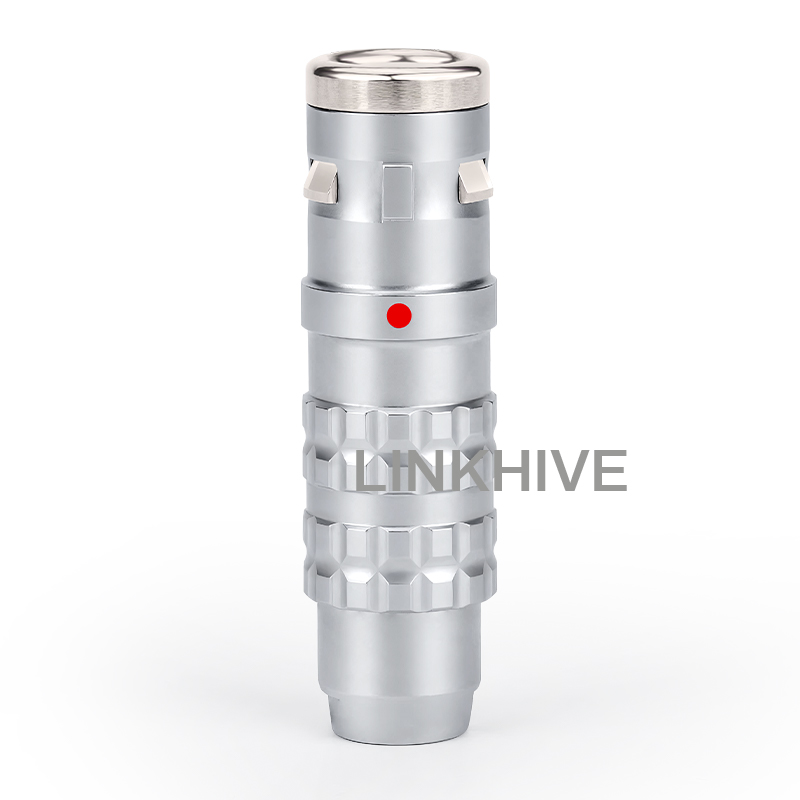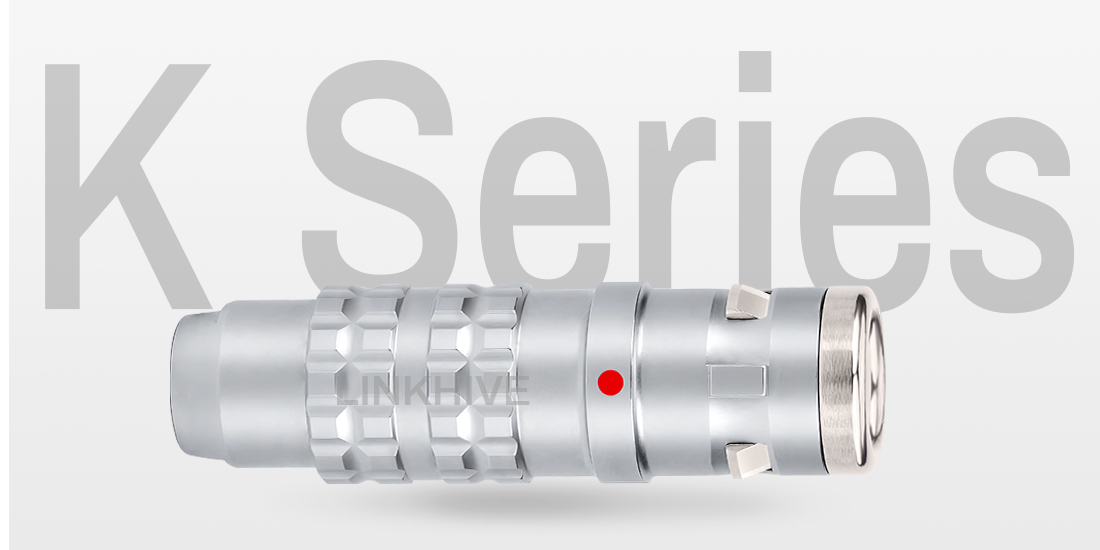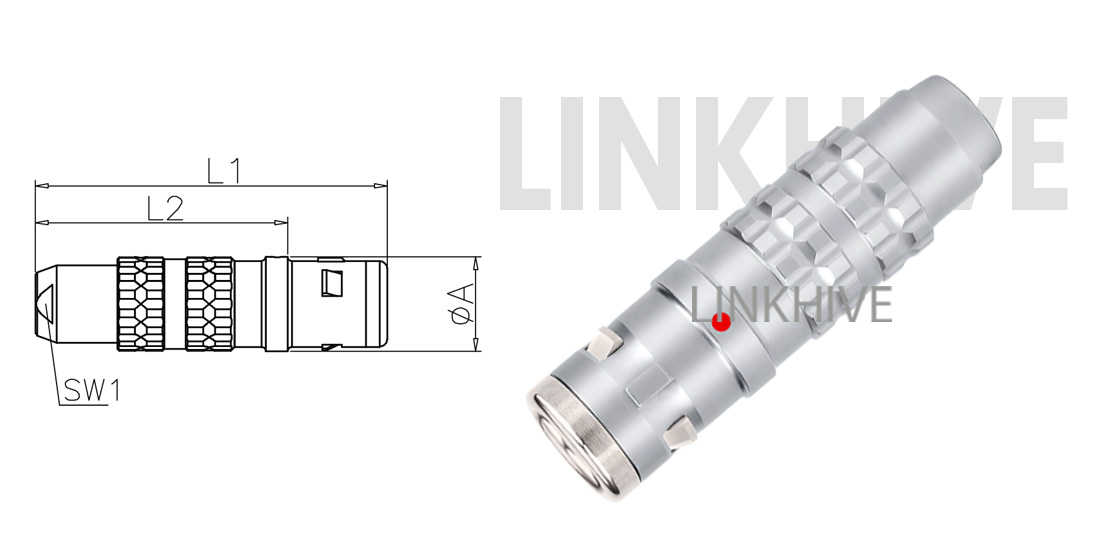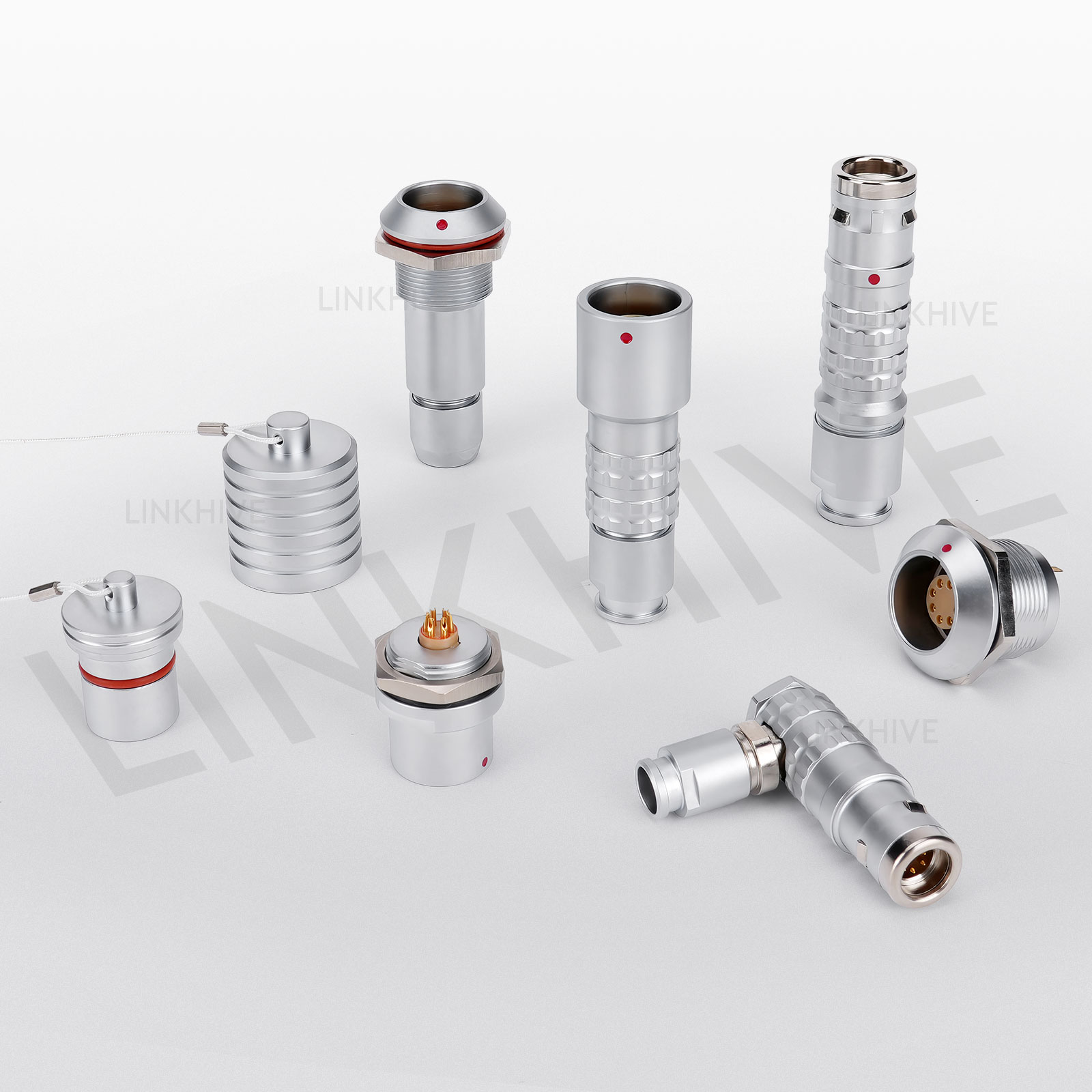In the field of modern electrical and communications, connectors play an important role as one of the key components to ensure the normal connection between different electronic devices and systems. Among them, Push Pull Connectors have become the preferred solution for many industries with their unique design and convenient operation.
Push Pull Connectors are connectors with a push-pull locking mechanism that can be connected and disconnected by simple push-pull operations. Unlike traditional threaded or snap-on connectors, Push Pull Connectors usually adopt an automatic locking design to ensure that the connection process is fast, safe and reliable. In addition, push pull electrical connectors are waterproof, dustproof and shockproof, and are widely used in industrial automation, communication equipment, medical equipment, aerospace and other fields.
This article will start with the installation process of Push Pull Connectors and introduce in detail how to correctly install Push Pull Connectors to ensure the stability and safety of the connection.

Structure and working principle of Push Pull Connectors
Before we delve into the installation of Push Pull Connectors, it is necessary to understand its basic structure and working principle.
1. Basic structure of push pull electrical connectors
Push Pull Connectors are usually composed of the following main parts:
● Shell: The shell is usually made of metal or high-strength plastic materials, which can provide good physical protection and prevent the external environment from interfering with the internal circuit.
● Contact pins: As the core part of the connector, the contact pins are responsible for transmitting current, electrical signals or data. The contact pins of Push Pull Connectors are usually made of copper alloy or other highly conductive materials, and the surface is gold-plated or silver-plated to ensure excellent electrical contact performance.
● Push-pull locking device: One of the biggest features of push pull electrical connectors is its unique locking mechanism. Through simple push-pull actions, the connector can be quickly connected and firmly locked to avoid loosening or disconnection due to external forces.
● Insulator: The insulator part of Push Pull Connectors is used to isolate different contact pins to prevent short circuits.
● Sealing device: In order to ensure the service life of Push Pull Connectors in harsh environments, sealing rings or other sealing measures are usually designed to prevent water, dust, etc. from entering the connector to ensure that the electrical performance is not affected.
2. Working Principle of Push Pull Connectors
The working principle of Push Pull Connectors is relatively simple. The design of its locking mechanism enables the connector to automatically lock during the connection process to avoid loosening due to external vibration or pulling force. Through simple push-pull actions, connection and disconnection can be completed quickly, which greatly facilitates the use of operators.
● When connecting: When the connector is inserted, the push-pull device contacts the socket at the other end through the inserted end to form a reliable electrical connection. As the connector is pushed, the locking mechanism automatically moves into place to ensure that the connector is fixed.
● When disconnecting: Just pull the other end of the connector, the push-pull mechanism will unlock, conveniently and safely disconnect, avoiding the common operational complexity of threaded connectors.

What are the installation steps of Push Pull Connectors?
Correctly installing Push Pull Connectors is the key to ensuring stable operation of the equipment. The specific steps for installing Push Pull Connectors will be described in detail below.
1. Preparation
Before installing Push Pull Connectors, you need to make adequate preparations:
● Check the model and specifications of the connector: Select the appropriate push pull electrical connector model according to the requirements of the equipment, and ensure that its pin number, size, rated voltage and current meet the requirements of the equipment.
● Check the appearance and quality of the connector: Ensure that the push pull electrical connector is not damaged, and the contact surface of the plug and socket should be clean, without scratches, cracks or dirt to prevent affecting the contact performance.
● Prepare cables and equipment: Prepare the cables and equipment interfaces to be connected according to the installation requirements of push pull electrical connectors. For equipment that requires multi-pin connection, ensure that the cable and the interface on the equipment end match to avoid mismatching during installation.
2. Ensure the installation environment is suitable
Push Pull Connectors are often used in industrial or outdoor environments, so before installation, you need to ensure that the working environment meets the installation requirements:
● Avoid moisture and dust: Before installation, try to clean the installation area to prevent dust or moisture from entering the connector, causing problems such as poor contact or short circuit.
● Avoid excessive bending of cables: During installation, ensure that the cables of the connectors are not pulled or bent to avoid affecting electrical performance and extending service life.
3. Install Push Pull Connectors
The installation of push pull electrical connectors is relatively simple. Here are the specific steps:
● Align the interface: First, align the plug of the Push Pull Connectors with the socket on the device end. Push Pull Connectors are usually designed for one-way insertion, so after ensuring that the interfaces on both ends are aligned, they can be easily connected.
● Push connector: Slowly push the plug of the Push Pull Connectors into the socket. At this time, the contact pins in the connector will automatically contact the corresponding socket pins to form a preliminary connection.
● Locking mechanism activation: Continue to push the plug, the locking device in the Push Pull Connectors will automatically activate, the plug will automatically enter into place, and the locking device will ensure that the push pull electrical connectors are firmly fixed. At this point, the electrical contact of the connector has been completed, and the signal or current can be transmitted normally.
● Check the connection: After installation, you can gently pull the plug of the connector to ensure that it is firmly connected and confirm that there is no looseness or poor contact. If the push pull electrical connectors are locked in place, there should be no obvious looseness or shaking when the plug is pulled.
4. Inspection and testing after installation
After the Push Pull Connectors are installed, some inspections and tests are required to ensure that they work properly:
● Electrical test: Use a multimeter or professional equipment to test the electrical performance of the push pull electrical connectors to ensure that the current transmission of the connector is stable and the voltage meets the requirements.
● Connection test: The functional test of the equipment can be used to verify whether the Push Pull Connectors can stably transmit signals or power. If the equipment operates normally, it means that the connector is installed correctly.
● Sealing check: If the installation environment is humid or dusty, it is also necessary to check the sealing performance of the push pull electrical connectors to ensure that the sealing ring is not damaged and the connector is in a good protective state.

Precautions for Push Pull Connectors
During the installation of Push Pull Connectors, there are some precautions that need special attention:
1. Preventing misoperation
Although Push Pull Connectors are designed to be convenient and quick, they still need to be properly operated when connected. Do not insert the connector with excessive force to avoid damaging the connector pins or interfaces.
2. Cleaning and maintenance
Clean the plugs and sockets of push pull electrical connectors regularly to prevent dirt accumulation and affect the contact quality. Use a clean cloth or soft brush to clean the connector surface and use an appropriate detergent to clean the contact points.
3. Adaptability to the use environment
The performance of push pull connectors will be affected by environmental conditions. For example, in an environment with too high or too low temperature, the locking mechanism or contact performance of the connector may be affected. Therefore, when selecting push pull connectors, be sure to confirm the temperature and humidity range of the working environment they are suitable for.
4. Pay attention to the load of the connector
Based on the power requirements of the equipment, ensure that the rated voltage and current of the push pull electrical connectors can meet the load requirements. Excessive load may cause the connector to overheat or be damaged, affecting the normal operation of the equipment.

LINKHIVE is your trusted partner for precision connectors. Based in Dongguan, China, we manufacture over 2,000 standard products, including waterproof connectors, high-quality molded cable assemblies, and push pull electrical connectors. With a robust commitment to quality, we ensure our products meet global standards like ISO9001 and RoHS. Whether you're a small business or a large corporation, we offer customized solutions, low prices, and affordable wholesale pricing. Get in touch with us for competitive quotes and discover why we’re the preferred choice for connector solutions worldwide.


